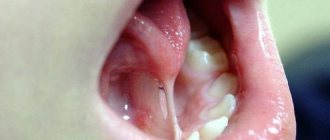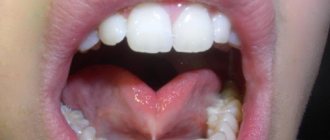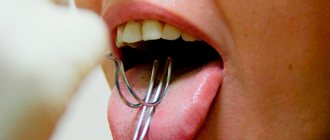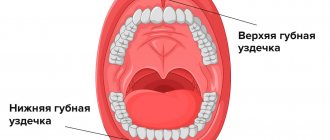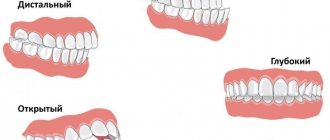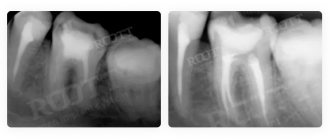If your child speaks poorly or you notice obvious signs of malocclusion in your baby, you should go for a consultation with a pediatric dentist. You can get rid of these and other problems with a simple procedure - you need to correct a short frenulum of the tongue in a child.
The frenulum of the tongue is a bridge that connects the tongue and the lower palate. It is responsible for how the tongue functions, affects speech, the ability to drink and eat, and swallow. The condition of the frenulum even affects the breathing process!
Here there is the possibility of pathology consisting in insufficient length, which leads to the recommendation to trim the frenulum of the child’s tongue. Why is it needed?
Let's consider the reasons for the need for this operation for children from a very early age. For newborn babies, sucking is a vital function. It is she who suffers in case of frenulum pathology. If it is not trimmed, the baby will not be able to drink mother's milk, including from a bottle with a nipple. It must be said that surgery in early childhood is easier to tolerate than in adulthood, so parents should not worry about the baby’s well-being.
Further, if a short frenulum of the tongue is detected at an older age, doctors advise surgery to prevent the defect from affecting the formation of the bite, and to avoid speech problems and disturbances in the process of eating.
What is lingual frenuloplasty?
The frenulum is a small membrane that connects the lower part of the tongue and the mucous membrane of the lower jaw. Despite its small size, it performs very important functions: it is responsible for the formation of dental occlusion, controls the mobility of the tongue and the functioning of the facial muscles.
There are three main pathologies of the tongue frenulum that require surgical correction.
- Wrong shape.
A healthy frenulum is a fold of mucous membrane in the shape of an arc. - Small size
(in medical terminology - ankyloglossia). The average length of the frenulum of the tongue in an adult is 3 centimeters; in a child it is shorter. In the case of ankyloglossia, the frenulum will not allow the tongue to be raised completely upward. - Incorrect mounting location.
A healthy frenulum is attached to the middle of the tongue, and with pathology it can be shifted to the tip.
In some cases, it becomes necessary to perform plastic surgery of the lip frenulum - the fold of mucous membrane connecting the lip and gum. The operation is performed to avoid impaired diction and the formation of malocclusion. Read more about lip frenuloplasty here.
general information
Frenuloplasty is a simple and fairly effective operation that involves cutting the frenulum of the upper lip. It allows you to prevent or solve many problems related to the child’s health. Sometimes this operation is also performed on adults (if an orthodontist or speech therapist recommends it).
The labial frenulums are elastic folds of the oral mucosa that provide support for the lips in the correct position and attach them to the jaw bones and gums. The size of the frenulum and its location are very individual: there are people who have several frenulums, while others do not have any at all. This pathology can provoke malocclusion and periodontal disease. In the case of its normal location, the frenulum of the upper lip is woven into the gum (5-8 mm in the middle of the neck of the tooth), it does not interfere with normal speech, and also does not negatively affect health. When the upper frenulum is woven into the interdental papilla (if it is very short, wide or not elastic enough), various negative consequences are possible. This defect can be corrected by plastic surgery of the frenulum of the upper lip. There are no other methods that will restore health and make a normal frenulum.
Causes of tongue frenulum anomaly
Most children have mild pathology, but severe forms are also not uncommon. The size of a child’s tongue frenulum is most often determined by heredity, as well as the following factors:
- viral infection in the mother in the first and last trimesters;
- late toxicosis;
- exacerbation of chronic diseases during pregnancy;
- injuries in the abdominal area during gestation;
- taking potent drugs by the expectant mother.
Symptoms of a shortened frenulum
How to determine if your baby needs surgery? It is necessary to seek specialist advice. However, you can notice signs of a defect in the frenulum of the tongue yourself by paying attention to some details.
- The frenulum resembles a transparent film and does not have a vascular network.
- The tongue is inactive.
- The child cannot reach the upper palate with the tip of his tongue.
- When you move your tongue, clicks are heard.
- Chewing and swallowing are difficult.
- Diction is broken.
- The lower front teeth are turned towards the tongue.
When and who needs tongue frenuloplasty?
Most often, an abnormality of the frenulum of the tongue can be diagnosed in a child immediately after birth. Then it is recommended to fix it. However, plastic surgery is performed on children of preschool and school age, as well as adults. The operation is indicated in the following cases.
- Violation of sucking in newborns.
If babies have a tongue frenulum that is too short, they cannot latch onto the nipple properly, resulting in underweight, fussiness, and poor sleep. - Diction defects.
Due to poor tongue mobility, children distort some sounds, especially “r”, “l” and hissing sounds. As a rule, the problem is discovered by a speech therapist in preschool age. - Abnormal shape of teeth and gums.
A tongue frenulum that is too short can interfere with proper growth of the lower jaw. This leads to incorrect positioning of the front teeth and gum recession. - Preparation for implantation and prosthetics.
Any deviations in the shape of the soft tissue from the norm can ultimately lead to implant failure, so they need to be corrected before surgery. The discomfort caused by the pathology of the frenulum of the tongue during the use of removable dentures, especially on the lower jaw, is also important: the structures simply fall out when talking or eating.
Surgical correction
If a short frenulum is detected in the maternity hospital, then its trimming is carried out immediately. This is done so that the baby can properly take the nipple and eat properly. If shortening is diagnosed at an older age and is not corrected by speech therapy techniques, then three options for surgical treatment are possible:
- Frenotomy is cutting to increase its length.
- Frenectomy is a circumcision when it is almost completely excised.
- Frenuloplasty is a plastic surgery during which the place of its attachment in the mouth is changed.
Despite the fact that frenulum surgery itself is quite common, most parents have a lot of questions about this procedure. We will consider the main ones below.
Why trim?
A too small size of such a fold of the mucous membrane can cause difficulty sucking at the breast in infants, and problems with the pronunciation of certain sounds and with the arrangement of teeth in the permanent dentition in older children. To avoid such problems, pruning is required.
Do I need to prune?
Most doctors, including the famous Dr. Komarovsky, are of the opinion that a short frenulum should be trimmed if it adversely affects the child’s ability to suck milk or pronounce certain sounds.
When a short frenulum does not negatively affect the processes of sound production and bite formation, then in such cases surgical intervention is not required.
What kind of doctor cuts?
Typically, frenulum correction operations are the responsibility of a dentist.
At what age is it best to have surgery?
When the frenulum should be trimmed is decided individually for each child. If we are talking about a fold on the upper lip, then correction is done no earlier than 6 years. Typically, the operation is performed only after the eruption of the permanent upper incisors. If correction is required on the lower lip, this is done more often after the 4th year of life.
In most cases, the hyoid frenulum is cut before 1 year of age (most often this is done in the maternity hospital). But correction is possible at any age.
How do they prune?
The frenulum trimming operation is performed on an outpatient basis in the surgical office of a dental clinic. The doctor carefully stretches the fold of the mucous membrane and makes a small incision with a sharp scalpel. After that, small sutures made of threads are applied to the edges, which after some time dissolve on their own and do not need to be removed.
A more modern technique is laser dissection, which eliminates the need for stitches, which speeds up the child’s recovery process.
Does it hurt to prune?
The dissection procedure is performed under local anesthesia, which eliminates the possibility of any pain.
«
What happens if tongue frenuloplasty is not performed in children?
An abnormality of the frenulum of the tongue in children provokes the following serious consequences.
- Due to a violation of the sucking regime in infancy, the child may not receive enough nutrition and, as a result, lag behind in development.
- Children with tongue frenulum abnormalities may never learn to pronounce some sounds.
- Incorrect placement of the frenulum leads to underdevelopment of the lower jaw, resulting in the formation of an incorrect bite.
If pathology of the frenulum of the tongue has been identified in a newborn, it can be easily corrected by making an incision with a laser. At this age, you won't even need stitches. With age, the structure of the frenulum becomes more complex, new vessels appear in it, so plastic surgery of the frenulum in preschool and school-age children turns into a full-fledged surgical operation. Therefore, it is best to do it at the age of 5-6 years, when the child’s milk teeth are replaced by permanent ones.
Parents can determine whether their child needs surgery on their own. To do this, ask him to reach the upper palate with the tip of his tongue. If he cannot do this, or it hurts, he should consult a doctor.
Patient reviews
“All my life I suffered from speech disorders, I even went to a speech therapist, but I didn’t achieve much effect. Besides, I have a slightly incorrect bite. I didn’t understand what the problem was, but in the end, at a dentist’s appointment, a shortening of the frenulum was discovered. It was quickly trimmed and after a few days I noticed how much easier it became to talk and even eat. Thank you very much to the doctors of the clinic!” Vladislav, 28 years old
“After the birth of the child, I almost immediately realized that he could not moisten milk normally. I was very scared, you never know what kind of disease could manifest itself. But a small frenulum was quickly discovered and plastic surgery was performed. And now there are no problems. Thank you very much!" Alina, 25 years old
“Thank you to the doctors for the quick and painless operation. I am always afraid of any interventions, but here they did it very carefully, without discomfort. Very pleased with the service and results.” Svetlana, 40 years old
Conclusion: Trimming a shortened frenulum of the tongue is a fairly simple operation that does not take much time. It is necessary at any age to restore normal functionality of the oral cavity. Sign up for a consultation at the Smile clinic in Ivanovo for a comprehensive examination and pain-free manipulation.
Operation techniques
There are two methods of performing tongue frenuloplasty: traditional (classical) and laser. This is a more modern and safer method. The laser allows the operation to be performed with great precision and does not cause bleeding after the procedure. In addition, there is no need for stitches, and healing time is significantly reduced. This is especially important if you need to perform laser frenuloplasty on a child: the baby will tolerate the procedure much easier.
Depending on what pathology of the frenulum is detected, the doctor uses one of three techniques: cuts the frenulum, removes it, or changes the attachment site. The number of cuts and their shape depend on the choice of technique.
Rehabilitation period
Recovery after the procedure takes 3-4 days, and even less when working with a laser. Recommendations during the rehabilitation period:
- Refusal to eat for 2-3 hours after the procedure
- Avoiding hot, spicy, sour foods for several days
- Avoiding hot drinks for a day
- Limiting solid foods while healing
- Rinsing the mouth with antiseptics
- Using healing ointments
The doctor gives detailed recommendations and prescriptions on an individual basis.
Therapeutic exercises
There are alternative methods that allow you to do without surgery, for example, a set of special exercises for developing the frenulum of the tongue.
- Reach alternately to the upper and lower lips.
- Extend your tongue and make pendulum movements from cheek to cheek.
- Suck your tongue to the roof of your mouth and let go, imitating a horse clopping its hooves.
- Place your tongue on each cheek with your mouth closed.
- Smile with your mouth open.
- Stretch your lips.
- Pull your lips into a tube, pretending to kiss.
To achieve results, you need to perform the exercises every day for 5 - 10 minutes. It is important to remember that this method is suitable for correcting mild disorders; more severe pathologies require surgical intervention.
Price for plastic frenulum of the tongue
The cost of this procedure usually consists of the cost of consultation and examination, local anesthesia and the service itself. This is a fairly simple surgical procedure, so no additional tests are required. The price of a classic operation (with a scalpel) for adults and children is the same, but may be slightly higher if the patient has too dense frenulum tissue. Then they do not give local anesthesia, but general anesthesia; it costs more, and, accordingly, costs increase due to this. The average cost of classic lingual frenuloplasty in Moscow is 3,800 rubles. The price for laser plastic surgery of the frenulum of the tongue is about 5,000 rubles.
The essence of the problem
Surgical manipulation of the soft palate to treat snoring began to be performed in the middle of the last century. And in mild cases it really sometimes helps. However, by the beginning of the 21st century, a lot of research had accumulated, proving the extremely low effectiveness of such operations for patients with severe sleep apnea, especially those who are overweight.
But many paid clinics continue to carry out this operation, sometimes forgetting about the principle of “do no harm.” And the main indication for surgical intervention, unfortunately, is often the patient’s willingness to take the money to the cash register. Trying to reduce the cost of the service, not every medical center conducts a full diagnostic examination of the patient (polysomnography or cardiorespiratory monitoring, sleep endoscopy). It comes to the point that sometimes the issue of surgical intervention is generally decided over the phone. As a result, the procedure not only does not give the desired effect, but in some cases, on the contrary, worsens snoring. And this is not to mention the possibility of infection and the risk of other complications.
To prove that for patients with obesity and severe apnea, uvulopalatoplasty is a bad decision, many studies have been conducted to evaluate the results of such operations. We present the results of one of them.



